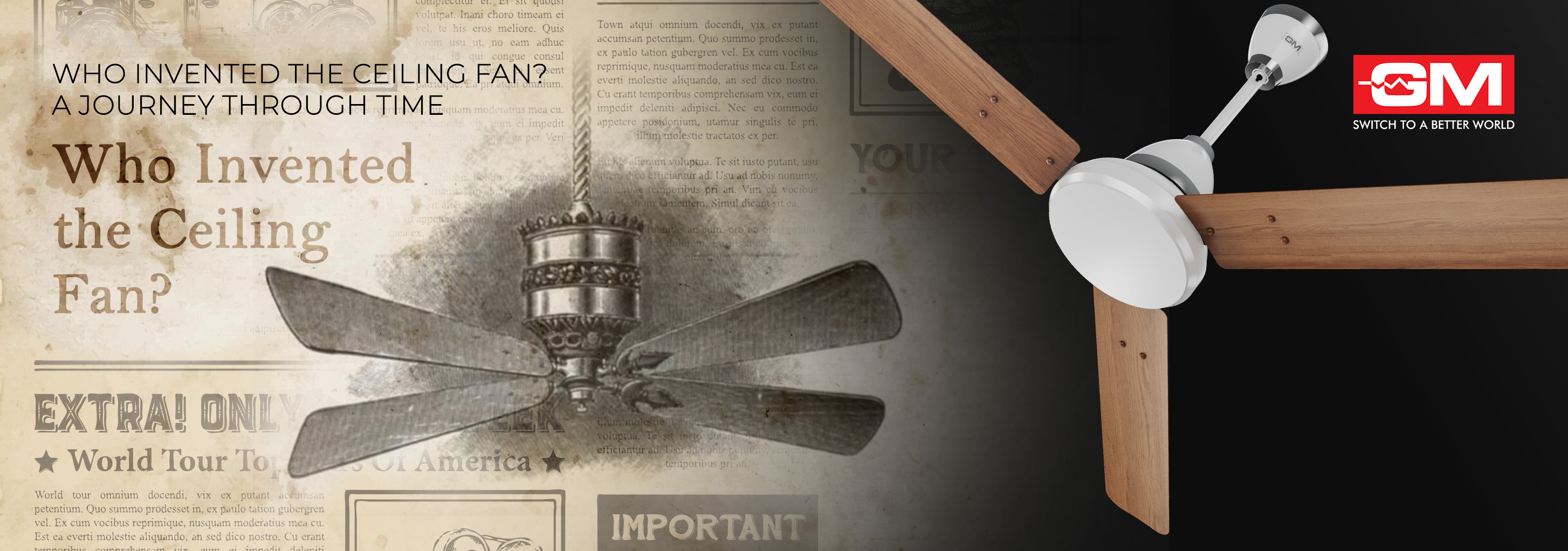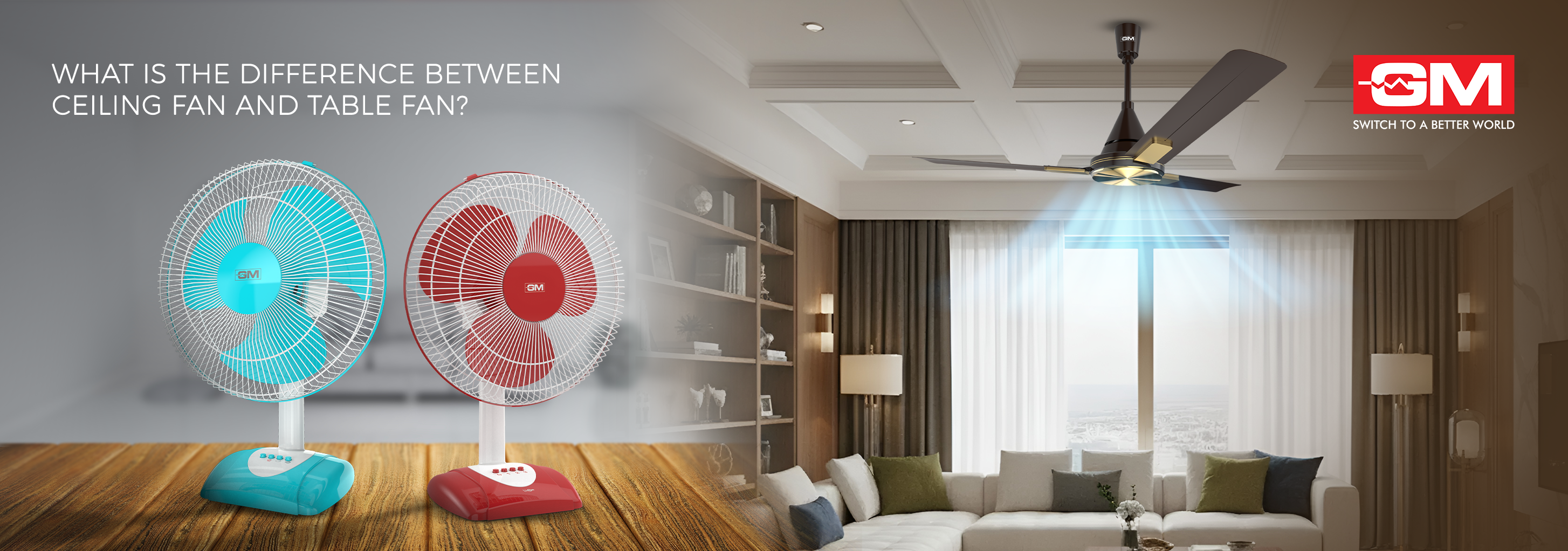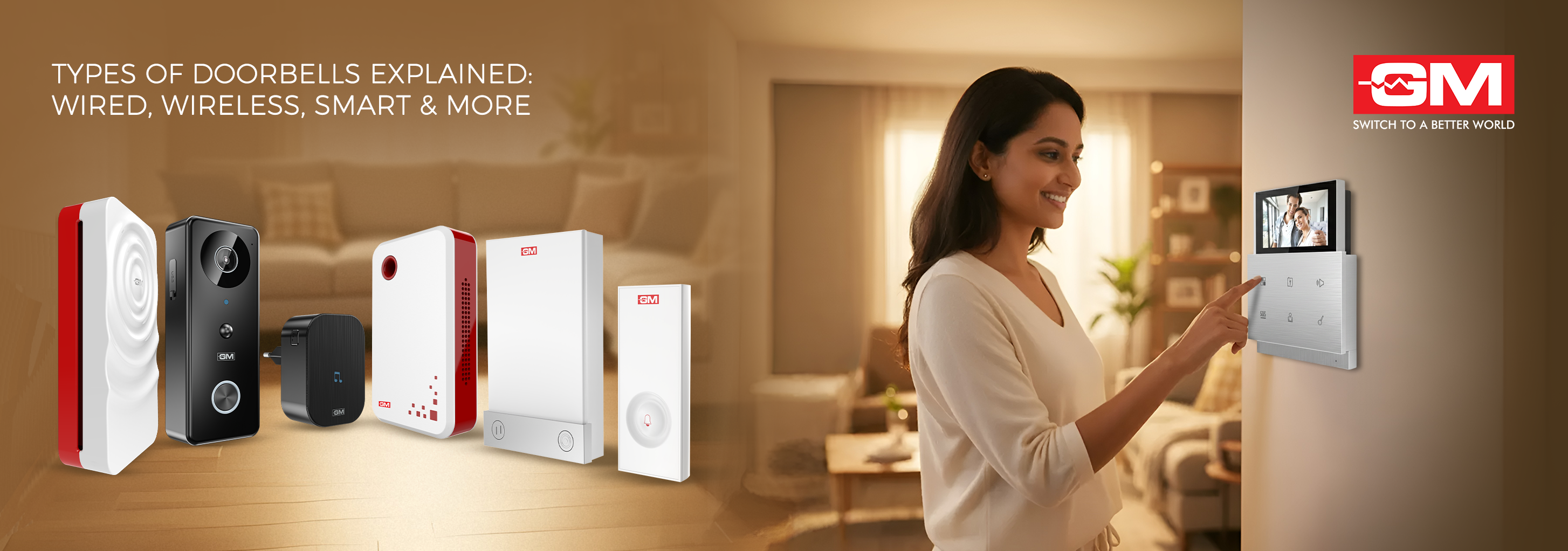Blog
3 Blade vs 4 Blade Fan: Which is Better for Your Home?
Updated on Nov 2025

When it comes to choosing the perfect ceiling fan for your home, most people focus on design, colour, or brand, but the number of blades can make a surprisingly big difference in how your fan performs. You've probably noticed that some ceiling fans have three blades while others have four, and may have wondered how one works better than the other.
The truth is, both 3-blade and 4-blade ceiling fans have their own strengths and unique applications. While the 3-blade fan is known for its sleek design and high-speed airflow, the 4-blade fan often scores higher in terms of quiet operation and aesthetic appeal. The choice between the two depends on what matters more to you: speed and efficiency, or smooth and silent comfort.
If you are looking to upgrade the ceiling fan and are confused between which fan is better, 3 or a 4-blade, here is a list of details you should know.
Understanding the Basics: 3-Blade vs 4-Blade Ceiling Fans
Before we get into comparisons, let’s quickly understand what sets these two types apart.
A 3-blade ceiling fan is typically designed for efficiency. It uses fewer blades, which means less drag on the motor, resulting in higher rotational speed and stronger airflow. These fans are often seen in modern homes or industrial spaces where performance and energy savings are top priorities.
On the other hand, a 4-blade ceiling fan comes with an extra blade, adding to its aesthetic appeal and stability. It tends to operate more quietly, distributing air gently and evenly across the room. This makes it a favourite for bedrooms, living rooms, and air-conditioned spaces where comfort and minimal noise are key.
Thus, in simple words, while both types keep your space cool, they function in slightly different ways. The best choice depends on your room’s size, purpose, and airflow requirements.
Understanding fan power usage is essential before choosing—don’t miss our blog on Ceiling Fan Power Consumption
Pros and Cons of 3-Blade Ceiling Fans
Pros of 3-Blade Ceiling Fans
1. High-Speed Airflow
The biggest advantage of a 3-blade ceiling fan is its ability to deliver strong, fast-moving air. With fewer blades, there’s less resistance, allowing the motor to spin faster. This makes it ideal for hot and humid areas where powerful airflow is needed to feel cool instantly.
2. Energy Efficiency
Fewer blades mean less weight and drag, which reduces the motor’s workload. This translates into lower energy consumption, making 3-blade fans an energy-efficient choice for daily use.
3. Modern Design Appeal
Most 3-blade ceiling fans come with sleek, minimalist designs that complement modern interiors. Their aerodynamic blades also contribute to their efficiency and style.
4. Affordable Pricing
Since these fans use fewer materials, they’re often more affordable than multi-blade fans, offering a great balance of performance and cost-effectiveness.
Cons of 3-Blade Ceiling Fans
1. Slightly Noisier Operation
With fewer blades cutting through the air, 3-blade fans can produce a bit more noise than their 4-blade counterparts, especially at high speeds.
2. Less Suitable for Air-Conditioned Rooms
These fans circulate air faster, but they may not complement air conditioning systems as efficiently as 4-blade fans do, since they don’t spread the cool air as evenly.
Pros and Cons of 4-Blade Ceiling Fans
Pros of 4-Blade Ceiling Fans
1. Smooth and Quiet Performance
The 4-blade ceiling fan is known for its whisper-quiet operation. The additional blade helps balance the fan, reducing vibration and noise. This makes it perfect for bedrooms, study rooms, and other quiet spaces.
2. Better Air Distribution
Although the airflow speed is lower than that of a 3-blade fan, the air distribution is more uniform. The extra blade ensures that the entire room receives a gentle and consistent breeze.
3. Stylish and Balanced Look
Many homeowners prefer 4-blade fans for their elegant and balanced appearance. They blend beautifully with contemporary and classic interiors alike.
4. Compatible with Air-Conditioned Spaces
4-blade fans work well with AC units by helping distribute the cool air more evenly throughout the room.
Cons of 4-Blade Ceiling Fans
1. Slightly Lower Airflow Speed
The extra blade adds drag, reducing the fan’s speed and overall air-throw distance. So, if you prefer a strong breeze, this type might feel a bit gentler.
2. Higher Energy Consumption
The additional blade also means a heavier load on the motor, leading to slightly more power consumption compared to 3-blade models.
3. Relatively Higher Cost
Since 4-blade ceiling fans require more materials and precision balancing, they often come at a higher price point.
Key Differences Between 3-Blade and 4-Blade Fans
Here is a list of key differences between 3-blade vs 4-blade ceiling fans, the factors that truly influence performance, noise, and overall comfort.
1. Airflow and Speed
The 3-blade ceiling fan wins in terms of speed and airflow intensity. With fewer blades, it encounters less air resistance, allowing it to rotate faster and deliver stronger gusts.
Meanwhile, the 4-blade ceiling fan produces smoother, more balanced airflow, which may not feel as powerful but covers a wider area.
2. Energy Efficiency
If energy savings are a top priority, the 3-blade fan is your go-to. Its lightweight design and reduced resistance mean the motor doesn’t work as hard. In contrast, 4-blade fans require slightly more energy to achieve similar airflow levels due to their added weight.
3. Noise Levels
Here, the 4-blade fan takes the lead. Its additional blade creates balance and reduces vibrations, resulting in quieter operation, ideal for peaceful environments like bedrooms or offices.
4. Aesthetic Appeal
While looks are subjective, 4-blade ceiling fans often have a more premium, balanced appearance. 3-blade fans, on the other hand, lean towards a more modern, minimalist aesthetic.
5. Maintenance and Cost
3-blade fans are easier to clean and maintain since they have fewer parts. They’re also more budget-friendly. 4-blade fans require slightly more care and tend to be priced higher due to their design complexity.
6. Room Compatibility
For larger rooms or spaces with high ceilings, a 3-blade fan might be the better choice due to its powerful air circulation. For smaller or air-conditioned rooms, 4-blade fans are preferable since they promote even air distribution without disturbing the temperature balance.
If you’re curious to learn about all the components of a ceiling fan, check out Different Parts of Ceiling Fans: Names & Functions
Which Fan Is Better: 3 Blade[1] or 4-Blade?
Now that we’ve broken down their features, the big question remains: which fan is better: 3 or 4 blades?
The answer depends on what you value more.
-
If you want high-speed airflow, energy efficiency, and a modern look, a 3-blade ceiling fan is perfect for you.
-
But if you prefer quiet operation, aesthetic appeal, and balanced air circulation, the 4-blade ceiling fan is your ideal pick.
Ultimately, both options perform well; it’s about matching the fan to your room’s purpose and environment.
Tips to Choose the Right Ceiling Fan
-
Consider Room Size – Larger rooms need stronger airflow (3-blade fans), while compact rooms benefit from gentle, even circulation (4-blade fans).
-
Check Ceiling Height – Ensure there’s enough space for optimal air movement; typically, at least 8–9 feet is ideal.
-
Look for Energy Efficiency – Opt for BLDC motor fans for maximum power savings, regardless of blade count.
-
Choose the Right Material – Aluminium or ABS plastic blades are durable and resistant to moisture.
-
Match the Style – Pick a fan design that complements your home decor, from sleek modern to classic traditional.
Choosing between a 3-blade and 4-blade ceiling fan isn’t just about looks; it’s about understanding performance, energy efficiency, and comfort.
A 3-blade ceiling fan excels in speed and airflow, making it ideal for living rooms and larger spaces where cooling performance matters most. Meanwhile, a 4-blade ceiling fan stands out for its quiet, graceful performance and elegant appeal, perfectly suited for bedrooms and AC rooms. Both options can keep your space comfortable; it’s simply about balancing power, style, and purpose.
Also Read: Ceiling Fan Size Guide to Help You Choose the Right-Sized Fan
Frequently Asked Questions
Q. Which fan is better for high airflow — 3 or 4 blades?
A 3-blade ceiling fan delivers stronger airflow due to reduced air resistance and higher rotational speed.
Q. Are 4-blade ceiling fans better for air-conditioned rooms?
Yes, 4-blade fans work better in AC rooms as they evenly distribute cool air without disrupting the temperature balance.
Q. Do more blades mean more air?
Not necessarily. More blades create smoother airflow but can reduce speed and efficiency slightly.
Q. Which fan consumes less power?
3-blade fans are generally more energy-efficient since they have less drag and require less motor effort.
Related Blogs

Who Invented the Ceiling Fan? A Journey Through Time
Ceiling fans are a quiet yet transformative part of life at home, offering comfort, style, and energy savings all year round. But not many of us know about the invention of the ceiling fan and how this humble device revolutionised modern living. To a
Read More
What is the Difference Between a Ceiling Fan and a Table Fan?
Fans are easy to use and save energy, so most people use them to keep a room cool and comfortable. But before you buy one, you should know what makes a ceiling fan different from a table fan. They both move air, but they do it in very different ways
Read More
Types of Doorbells Explained: Wired, Wireless, Smart, and More
A doorbell is one of the most important parts of a home or office, but it's also one of the most common things that people forget about. It not only lets visitors know you're home, but it also makes your space more convenient, safe, and stylish. The
Read More
How to Use a Steam Iron Safely and Effectively?
No matter if you're going to work, a meeting, or a party, wearing a crisp, wrinkle-free outfit can boost your confidence right away. But you need to know how to use a steam iron correctly to get that perfect finish. A steam iron isn't just another ap
Read More